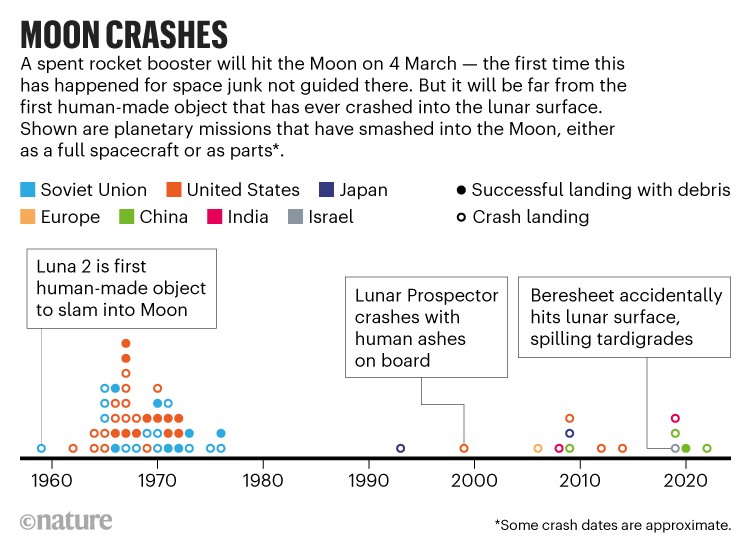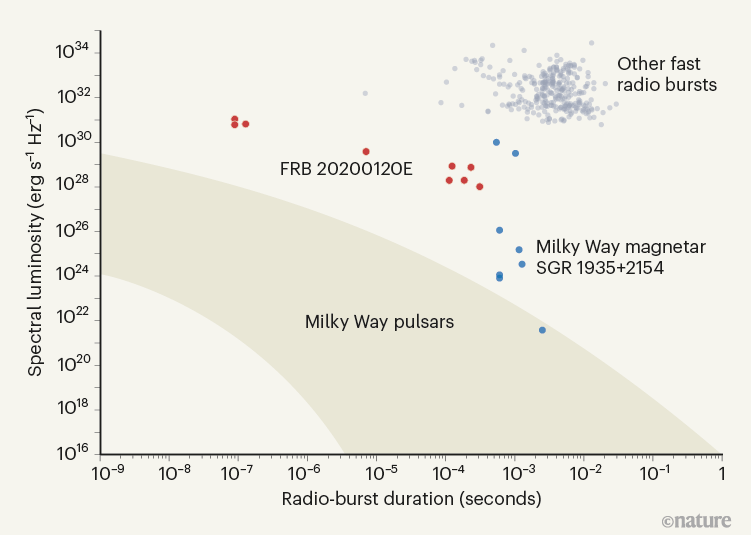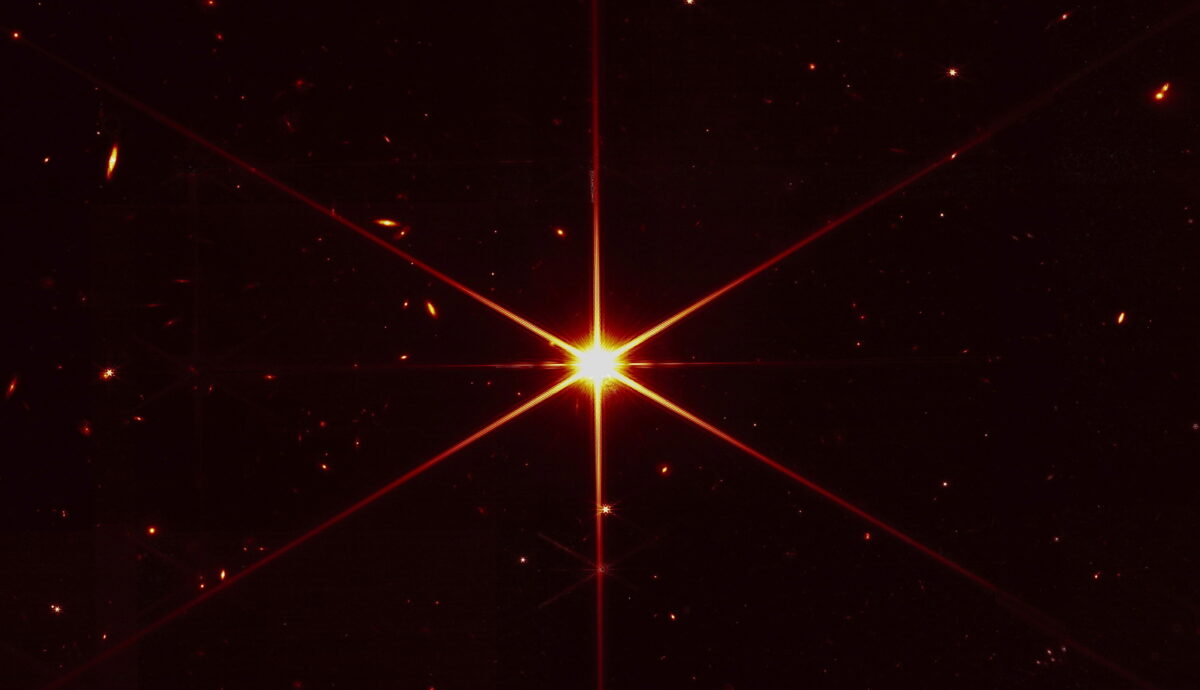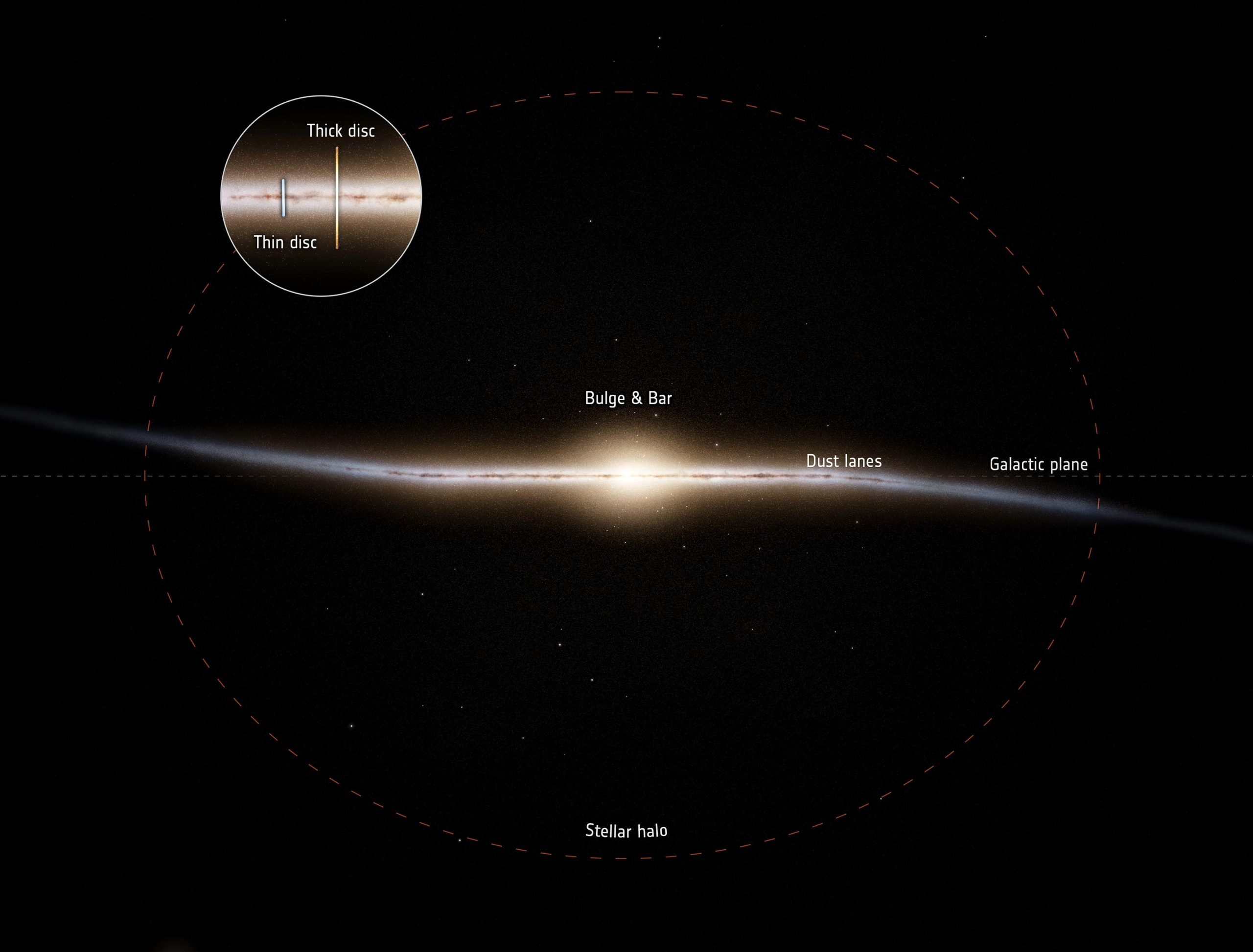You are using an out of date browser. It may not display this or other websites correctly.
You should upgrade or use an alternative browser.
You should upgrade or use an alternative browser.
The thread for space cadets!
- Thread starter hobbsyoyo
- Start date
GreatLordofPie
Prince
- Joined
- Nov 20, 2009
- Messages
- 386
First Images of Venus' Surface in Visible Light

NASA people talking about it
NASA’s Parker Solar Probe has taken its first visible light images of the surface of Venus from space.
Smothered in thick clouds, Venus’ surface is usually shrouded from sight. But in two recent flybys of the planet, Parker used its Wide-Field Imager, or WISPR, to image the entire nightside in wavelengths of the visible spectrum – the type of light that the human eye can see – and extending into the near-infrared.
“The objective was to measure the speed of the clouds,” said WISPR project scientist Angelos Vourlidas, co-author on the new paper and researcher at Johns Hopkins University Applied Physics Laboratory.
But instead of just seeing clouds, WISPR also saw through to the surface of the planet. The images were so striking that the scientists turned on the cameras again during the fourth pass in February 2021. During the 2021 flyby, the spacecraft’s orbit lined up perfectly for WISPR to image Venus’ nightside in entirety.
The images, combined into a video, reveal a faint glow from the surface that shows distinctive features like continental regions, plains, and plateaus. A luminescent halo of oxygen in the atmosphere can also be seen surrounding the planet.
The data:Smothered in thick clouds, Venus’ surface is usually shrouded from sight. But in two recent flybys of the planet, Parker used its Wide-Field Imager, or WISPR, to image the entire nightside in wavelengths of the visible spectrum – the type of light that the human eye can see – and extending into the near-infrared.
“The objective was to measure the speed of the clouds,” said WISPR project scientist Angelos Vourlidas, co-author on the new paper and researcher at Johns Hopkins University Applied Physics Laboratory.
But instead of just seeing clouds, WISPR also saw through to the surface of the planet. The images were so striking that the scientists turned on the cameras again during the fourth pass in February 2021. During the 2021 flyby, the spacecraft’s orbit lined up perfectly for WISPR to image Venus’ nightside in entirety.
The images, combined into a video, reveal a faint glow from the surface that shows distinctive features like continental regions, plains, and plateaus. A luminescent halo of oxygen in the atmosphere can also be seen surrounding the planet.

NASA people talking about it
Narz
keeping it real
Just gotta get some really strong AC and we can vaca there 

New planet to land your winning spaceship on (may not be too pleasant though)
Astronomers have found evidence for a new planet circling Proxima Centauri, the nearest star to the sun.
The alien world is only a quarter of the mass of Earth and orbits extremely close to its parent star, at one tenth of the distance between the sun and Mercury, the solar system’s innermost planet, at about 2.4m miles (4m km) .
Researchers spotted the new planet after studying tiny wobbles in the motion of Proxima Centauri caused by the gravitational pull it exerts as it swings around the star. Observations taken with the European Southern Observatory’s Very Large Telescope (VLT) in Chile suggest the planet completes a full orbit of the star every five days.
The discovery shows that our closest stellar neighbour is “packed with interesting new worlds” within reach of further study and future exploration, said João Faria, a researcher at the Institute of Astrophysics and Space Sciences in Portugal and lead author on the study.
Named Proxima d, the planet is the third – and the lightest – to be spotted around Proxima Centauri, which at four light years away is the closest star to the solar system. It joins Proxima b, a planet with a mass comparable to that of Earth, which completes an orbit every 11 days, and Proxima c, which is believed to take about five years to circle the star.
[EDIT] Actually nature says it may be the one to aim for:The alien world is only a quarter of the mass of Earth and orbits extremely close to its parent star, at one tenth of the distance between the sun and Mercury, the solar system’s innermost planet, at about 2.4m miles (4m km) .
Researchers spotted the new planet after studying tiny wobbles in the motion of Proxima Centauri caused by the gravitational pull it exerts as it swings around the star. Observations taken with the European Southern Observatory’s Very Large Telescope (VLT) in Chile suggest the planet completes a full orbit of the star every five days.
The discovery shows that our closest stellar neighbour is “packed with interesting new worlds” within reach of further study and future exploration, said João Faria, a researcher at the Institute of Astrophysics and Space Sciences in Portugal and lead author on the study.
Named Proxima d, the planet is the third – and the lightest – to be spotted around Proxima Centauri, which at four light years away is the closest star to the solar system. It joins Proxima b, a planet with a mass comparable to that of Earth, which completes an orbit every 11 days, and Proxima c, which is believed to take about five years to circle the star.
the newly spotted world is probably smaller than Earth, and could have oceans of liquid water
Writeup Paper
Last edited:
Just gotta get some really strong AC and we can vaca there
and something against the acid rain. Then you just have to deal with the pressure.
Glass balls found on the moon
Is it the clangers playing marbles? Found by Chinese Lunar Rover Yutu-2.

Is it the clangers playing marbles? Found by Chinese Lunar Rover Yutu-2.
Glass is ubiquitous in lunar regolith, and volcanism and hypervelocity impacts are the major mechanisms of forming lunar glasses. Lunar volcanic glass spherules are less than 1 mm in diameters, and most are less than 300 μm. Recognized impact glass spherules on the Moon are dominantly sub-millimeter in sizes, and few are up to ∼8 mm in diameter.
Hitherto discovered macro-sized glass globules on the Moon (up to ∼4 cm in diameter) are opaque impact glass that usually contains hollows and lithic clasts
Hitherto discovered macro-sized glass globules on the Moon (up to ∼4 cm in diameter) are opaque impact glass that usually contains hollows and lithic clasts

Spoiler Video, not sure it adds much :

The NASA/ESA Hubble Space Telescope has captured what appears to be a triple galaxy merger in progress, as well as a tumultuous mixture of star formation and tidal distortions caused by the gravitational interactions of this galactic trio.
This image is from a series of Hubble observations investigating weird and wonderful galaxies found by the Galaxy Zoo citizen science project. Using Hubble’s powerful Advanced Camera for Surveys (ACS), astronomers took a closer look at some of the more unusual galaxies that volunteers had identified.


If you were to look up at the sky with radio goggles, you would notice bright flashes at random locations roughly once every minute. Over the past 15 years, astronomers have detected more than 600 sources of such radio bursts — as this graphic explains.
Fast radio bursts are luminous radio emissions typically emanating from distant galaxies, and can be emitted by highly magnetized neutron stars called magnetars. The bursts are also commonly observed from less-magnetized neutron stars, known as pulsars, in and around the Milky Way. The shaded region defines the range of luminosities and durations of radio bursts from these pulsars. Only one Milky Way magnetar, called SGR 1935+2154, has been seen to emit fast radio bursts (blue dots) similar to those from other galaxies.
A paper in Nature reports the unusual location of a relatively nearby source of fast radio bursts, known as FRB 20200120E, and a paper in Nature Astronomy shows that some of its emissions were just tens of nanoseconds long (red dots). Although the spectral luminosities of the FRB 20200120E emissions are similar to those of fast radio bursts, the durations are more like those of some pulsars. A News & Views article explains more about these discoveries.
Source
I ran across a YT channel hosted by an astrophysicist who posted some astronomy/astrophysics-themed memes.
Here's one that is undoubtedly completely factual:

Also, a TIL moment: Apparently Saturn has more moons than Jupiter does.
Here's one that is undoubtedly completely factual:
Also, a TIL moment: Apparently Saturn has more moons than Jupiter does.
Latest casualty of the war: ExoMars rover, Rosalind Franklin

The European Space Agency (ESA) has slammed the brakes on its ExoMars rover, Rosalind Franklin.
The next launch window would be in late 2024, but finding a rocket, lander, and descent stage in that time frame presents a challenge. ESA has "authorised the ESA Director General to carry out a fast-track industrial study to better define the available options for a way forward to implement the ExoMars rover mission."
The European cost of the ExoMars program has been put at €1.3bn ($1.44bn).
The rover element of the mission was due to launch in 2020. This didn't happen thanks to problems with the parachutes. The next launch date had been slated for September 2022 and scientists were looking forward to having a rover on Mars capable of drilling deep below the surface.
The next launch window would be in late 2024, but finding a rocket, lander, and descent stage in that time frame presents a challenge. ESA has "authorised the ESA Director General to carry out a fast-track industrial study to better define the available options for a way forward to implement the ExoMars rover mission."
The European cost of the ExoMars program has been put at €1.3bn ($1.44bn).
The rover element of the mission was due to launch in 2020. This didn't happen thanks to problems with the parachutes. The next launch date had been slated for September 2022 and scientists were looking forward to having a rover on Mars capable of drilling deep below the surface.

First picture of stars from the James Webb telescope!!
Highest resolution image ever taken in space. I cannot actually find a high res version, but it looks something like this:

Highest resolution image ever taken in space. I cannot actually find a high res version, but it looks something like this:

Spoiler Youtube of the scientists talking about it :
GreatLordofPie
Prince
- Joined
- Nov 20, 2009
- Messages
- 386
I can't wait for the Deep Field-esque vistas that are in the pipeline.First picture of stars from the James Webb telescope!!
Highest resolution image ever taken in space. I cannot actually find a high res version, but it looks something like this:

Back down here on earth, the two most powerful rockets ever are stacked and undergoing testing at their launch pads
Spoiler :
JoJo reference
Liquid metal, ruby and sapphire could rain down on huge exoplanet

Liquid metal, ruby and sapphire could rain down on one hemisphere of blisteringly hot giant exoplanet that is tidally locked in a tight orbit around its star. That is the conclusion of astronomers who have developed a detailed 3D model of the atmosphere of WASP-121b, which is a “hot Jupiter” that is about 850 light-years from Earth.
The fact that the temperature drops low enough for titanium and aluminium rain on the night side, combined with the absence of these metals in the gas phase at the day-night terminator, allows the team to conclude that titanium and aluminium are indeed raining down on the night side.
He adds that aluminium would probably condense in the form of corundum, which is an aluminium oxide. When traces of elements like chromium, iron, and titanium are included in corundum, it becomes the gems ruby and sapphire. “So, it could be raining droplets of ruby and sapphire on the nightside hemisphere.”
The fact that the temperature drops low enough for titanium and aluminium rain on the night side, combined with the absence of these metals in the gas phase at the day-night terminator, allows the team to conclude that titanium and aluminium are indeed raining down on the night side.
He adds that aluminium would probably condense in the form of corundum, which is an aluminium oxide. When traces of elements like chromium, iron, and titanium are included in corundum, it becomes the gems ruby and sapphire. “So, it could be raining droplets of ruby and sapphire on the nightside hemisphere.”

Orcs in space!

We finally have a sharper image of one of the weirdest phenomena in space. These aptly named odd radio circles, or ORCs, are circles of radio waves that don’t seem to emit any radiation in other wavelengths, unlike many other objects detectable in radio frequencies.
A team led by Ray Norris at the Australian Commonwealth Scientific and Industrial Research Organisation first spotted these strange circles in 2020 using the Australian Square Kilometre Array Pathfinder radio telescope. Astronomers have now definitively seen five of them, with several more unconfirmed candidates. Now Norris and his colleagues have used the MeerKAT telescope in South Africa to take the sharpest image yet of an ORC.
Odd radio circles are about 1 million light years across, larger than even the biggest spiral galaxies. Of the five confirmed ORCs, astronomers had seen galaxies at the centres of three of them, which hinted that the circles might be formed by some galactic process.
According to Norris, there are now three main alternatives: they could be debris from a huge explosion in their host galaxies, they could come from jets of material spewed out by supermassive black holes or they could come from residual energy from bursts of star formation.
A team led by Ray Norris at the Australian Commonwealth Scientific and Industrial Research Organisation first spotted these strange circles in 2020 using the Australian Square Kilometre Array Pathfinder radio telescope. Astronomers have now definitively seen five of them, with several more unconfirmed candidates. Now Norris and his colleagues have used the MeerKAT telescope in South Africa to take the sharpest image yet of an ORC.
Odd radio circles are about 1 million light years across, larger than even the biggest spiral galaxies. Of the five confirmed ORCs, astronomers had seen galaxies at the centres of three of them, which hinted that the circles might be formed by some galactic process.
According to Norris, there are now three main alternatives: they could be debris from a huge explosion in their host galaxies, they could come from jets of material spewed out by supermassive black holes or they could come from residual energy from bursts of star formation.

Gaia Spacecraft Discovers Parts of the Milky Way Are Much Older Than Thought

Using data from ESA's Gaia mission, astronomers have shown that a part of the Milky Way known as the 'thick disc' began forming 13 billion years ago, around 2 billion years earlier than expected, and just 0.8 billion years after the Big Bang.
The age of a star is one of the most difficult parameters to determine. It cannot be measured directly but must be inferred by comparing a star's characteristics with computer models of stellar evolution. The compositional data helps with this. The Universe was born with almost exclusively hydrogen and helium. The other chemical elements, known collectively as metals to astronomers, are made inside stars, and exploded back into space at the end of a star's life, where they can be incorporated into the next generation of stars. So, older stars have fewer metals and are said to have lower metallicity.
The LAMOST data gives the metallicity. Together, the brightness and metallicity allow astronomers to extract the star's age from the computer models. Before Gaia, astronomers were routinely working with uncertainties of 20-40 percent, which could result in the determined ages being imprecise by a billion years or more.
Gaia's EDR3 data release changes this. "With Gaia's brightness data, we are able to determine the age of a sub giant star to a few percent," says Maosheng. Armed with precise ages for a quarter of a million sub giant stars spread throughout the galaxy, Maosheng and Hans-Walter began the analysis.
The age of a star is one of the most difficult parameters to determine. It cannot be measured directly but must be inferred by comparing a star's characteristics with computer models of stellar evolution. The compositional data helps with this. The Universe was born with almost exclusively hydrogen and helium. The other chemical elements, known collectively as metals to astronomers, are made inside stars, and exploded back into space at the end of a star's life, where they can be incorporated into the next generation of stars. So, older stars have fewer metals and are said to have lower metallicity.
The LAMOST data gives the metallicity. Together, the brightness and metallicity allow astronomers to extract the star's age from the computer models. Before Gaia, astronomers were routinely working with uncertainties of 20-40 percent, which could result in the determined ages being imprecise by a billion years or more.
Gaia's EDR3 data release changes this. "With Gaia's brightness data, we are able to determine the age of a sub giant star to a few percent," says Maosheng. Armed with precise ages for a quarter of a million sub giant stars spread throughout the galaxy, Maosheng and Hans-Walter began the analysis.

Similar threads
- Replies
- 4
- Views
- 767
- Replies
- 7
- Views
- 1K
- Replies
- 5
- Views
- 4K
- Replies
- 13
- Views
- 2K











